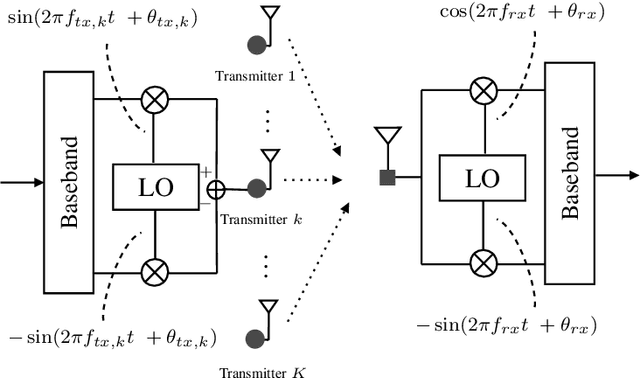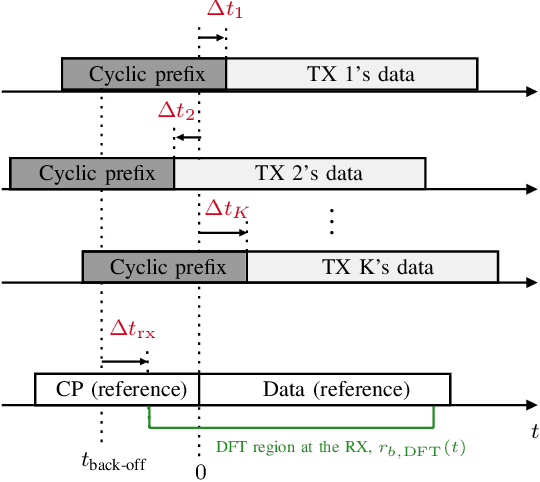Waveforms for Computing Over the Air
Paper and Code
May 27, 2024



Over-the-air computation (AirComp) leverages the signal-superposition characteristic of wireless multiple access channels to perform mathematical computations. Initially introduced to enhance communication reliability in interference channels and wireless sensor networks, AirComp has more recently found applications in task-oriented communications, namely, for wireless distributed learning and in wireless control systems. Its adoption aims to address latency challenges arising from an increased number of edge devices or IoT devices accessing the constrained wireless spectrum. This paper focuses on the physical layer of these systems, specifically on the waveform and the signal processing aspects at the transmitter and receiver to meet the challenges that AirComp presents within the different contexts and use cases.
 Add to Chrome
Add to Chrome Add to Firefox
Add to Firefox Add to Edge
Add to Edge